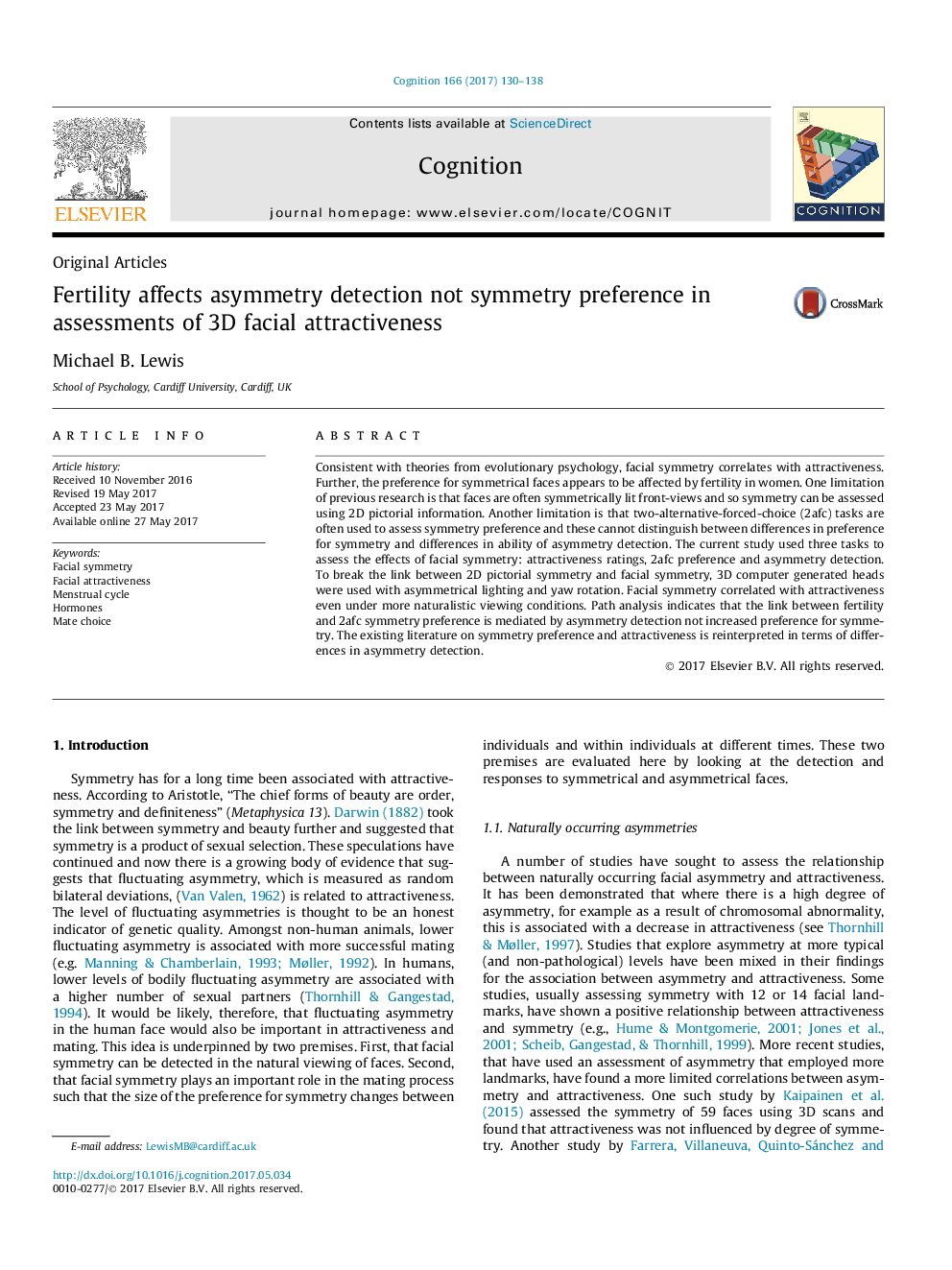| Article ID | Journal | Published Year | Pages | File Type |
|---|---|---|---|---|
| 5041548 | Cognition | 2017 | 9 Pages |
â¢3D facial symmetry can be determined from 2D asymmetrical projections.â¢Facial asymmetry detection is more accurate at times of higher fertility.â¢Yaw rotation and asymmetric lighting increase facial attractiveness.
Consistent with theories from evolutionary psychology, facial symmetry correlates with attractiveness. Further, the preference for symmetrical faces appears to be affected by fertility in women. One limitation of previous research is that faces are often symmetrically lit front-views and so symmetry can be assessed using 2D pictorial information. Another limitation is that two-alternative-forced-choice (2afc) tasks are often used to assess symmetry preference and these cannot distinguish between differences in preference for symmetry and differences in ability of asymmetry detection. The current study used three tasks to assess the effects of facial symmetry: attractiveness ratings, 2afc preference and asymmetry detection. To break the link between 2D pictorial symmetry and facial symmetry, 3D computer generated heads were used with asymmetrical lighting and yaw rotation. Facial symmetry correlated with attractiveness even under more naturalistic viewing conditions. Path analysis indicates that the link between fertility and 2afc symmetry preference is mediated by asymmetry detection not increased preference for symmetry. The existing literature on symmetry preference and attractiveness is reinterpreted in terms of differences in asymmetry detection.
